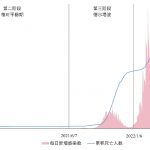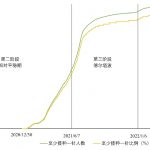 UM research team puts forward suggestions for epidemic prevention and control based on Singapore’s experience
UM research team puts forward suggestions for epidemic prevention and control based on Singapore’s experience
Drawing on the experience of Singapore in combating COVID-19, the University of Macau (UM) COVID-19 research team has put forward suggestions for optimising the epidemic prevention strategy of Macao during the adaptation to the ‘ten new measures’ of COVID-19 response announced earlier by the central government. The suggestions include continuing to promote vaccination as a means of protection for the community, implementing effective triage measures and utilising healthcare channels in the community for health promotion and public education, and maintaining relatively stringent protection measures as deemed essential.
In view of the low pathogenicity of the new Omicron variant, Macao and its neighbouring regions have adjusted their epidemic prevention policies accordingly. According to the UM research team, similar to Macao, Singapore once adopted zero-tolerance measures towards COVID-19. However, as the more transmissible and less pathogenic Omicron variant spreads, the Singaporean government, while adhering to the principle of ‘protecting lives and livelihoods’, has gradually revised its anti-epidemic strategy and relaxed relevant epidemic prevention measures in order to create a COVID-19 resilient nation. At the moment, the death rate from COVID-19 is controlled at a very low level in Singapore. According to the latest epidemiological data from the Ministry of Health of Singapore, the overall death rate of people with minimum vaccine protection is 0.024 per cent, which is lower than the death rate from influenza.
According to the UM research team, the number of people infected with Omicron in Singapore began to increase sharply in early January 2022. Between 16 June and 15 October in 2022, Singapore further created conditions for relaxation, the most critical of which is to enhance vaccination protection for high-risk groups by strongly encouraging those in the groups and people aged between 50 and 79 to receive a second booster dose. The outbreak in Singapore lasted for roughly four months since early January 2022, with the number of confirmed cases peaking within two months and falling back to a low after four months. As Macao enters the period of important holidays such as Christmas, New Year, and Chinese New Year, the successful experience of Singapore in implementing its epidemic prevention policy towards co-existence with the virus can serve as a reference for the city for gradually relaxing epidemic prevention measures, lowering the peak of active cases, and achieving a smooth transition. The following points are worth noting:
- Continuing to promote vaccination as a means of protection for the community (especially for the elderly): Singapore has been implementing its COVID-19 vaccination strategy in an orderly manner to achieve herd immunity as the country moves towards success in the battle against the virus. According to the latest research data, two doses of COVID-19 vaccine are enough to provide basic protection for a person, and a third dose of the vaccine can further enhance the protection. To this end, it is necessary to further promote vaccination in Macao. The Macao SAR government has already purchased the BioNTech bivalent mRNA vaccine against Omicron BA.4/5 and the special formulation of BioNTech vaccine for toddlers aged between six months and four years, with the registration for vaccination commenced on 1 December. COVID-19 vaccination can reduce the risk of infection and, more importantly, the risk of serious illnesses and death after infection. For this reason, toddlers aged six months or above and other individuals (especially the elderly) who have not yet received the vaccine or booster shot should be vaccinated as early as possible.
- Implementing effective triage measures and utilising healthcare channels in the community for health promotion and public education: The emergence of a large number of confirmed cases in a short period of time will be a big challenge for Macao’s healthcare system. For this reason, it is necessary to implement clear and effective triage measures to lower its impact. In addition, to prevent panic among the public, it is necessary for health authorities to inform local residents that, compared with the Delta variant, the Omicron variant has three characteristics – high transmissibility, a significantly lower death rate, and significantly reduced pathogenicity. The Omicron variant replicates more rapidly in the upper respiratory tract, such as the nasal cavity and trachea, than in the lungs. Therefore, the vast majority of patients infected with Omicron have typical flu-like symptoms, which mainly affect the upper respiratory tract and are similar to those of the flu and common cold. The proportion of asymptomatic and mild cases of Omicron is much higher, accounting for over 99 per cent of all confirmed cases. More importantly, health promotion and public education should be provided in time to guide residents on how to take appropriate action in different situations (when they or their family members become confirmed cases with symptoms, asymptomatic cases or cases with mild symptoms, or close contacts of infected people). Health authorities should make good use of resources of the healthcare system in the community to educate residents about the symptoms of COVID-19 through doctors, pharmacists, and other health professionals, so as to provide them with consistent and up-to-date advice on epidemic prevention as well as offer them appropriate reassurance for their mental wellbeing.
- Maintaining relatively stringent preventive measures as deemed essential: Rapid antigen tests (RAT) should be adopted as an alternative to nucleic acid tests at the community level for immediate diagnosis. When the accuracy of RAT is sufficiently high, the tests can screen out confirmed cases with high viral load in the community more efficiently than nucleic acid tests, and more follow-up actions, such as restricted movement and home isolation, can be taken to reduce and slow down community transmission in a more timely manner. For this reason, integrating RAT into the daily routine of residents is an important means for epidemic prevention, given the rapid transmission of the Omicron variant. Health authorities may consider increasing the number of outlets for the purchase of RAT kits and encourage workers of different industries to use RAT as a routine screening tool based on the risks for infection in their work environment.




